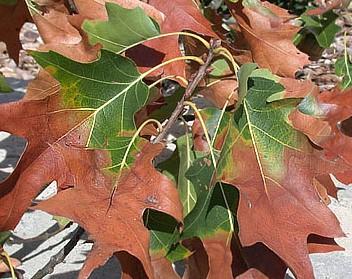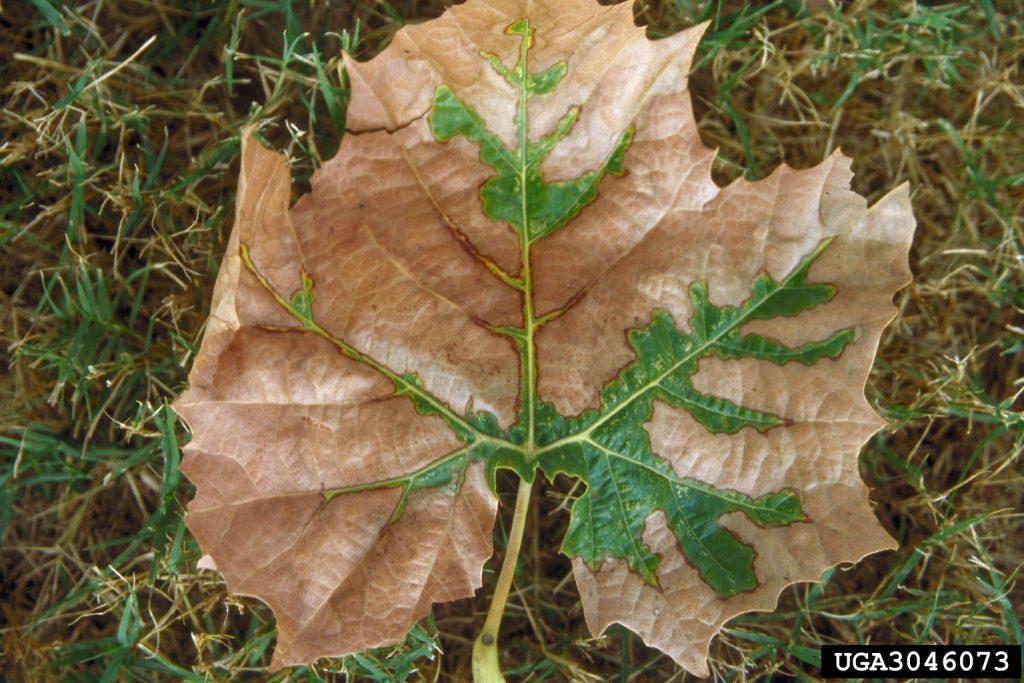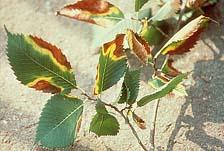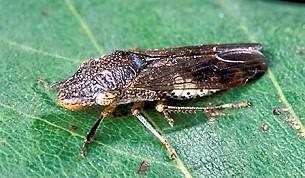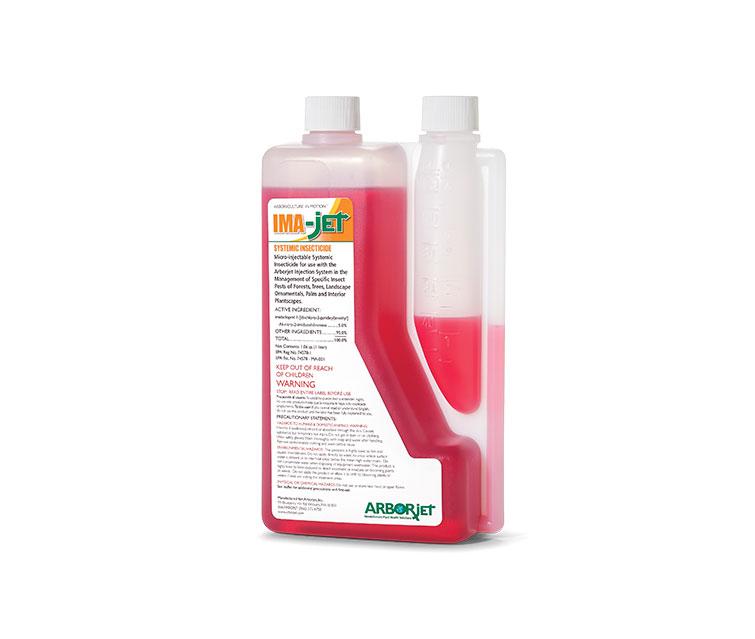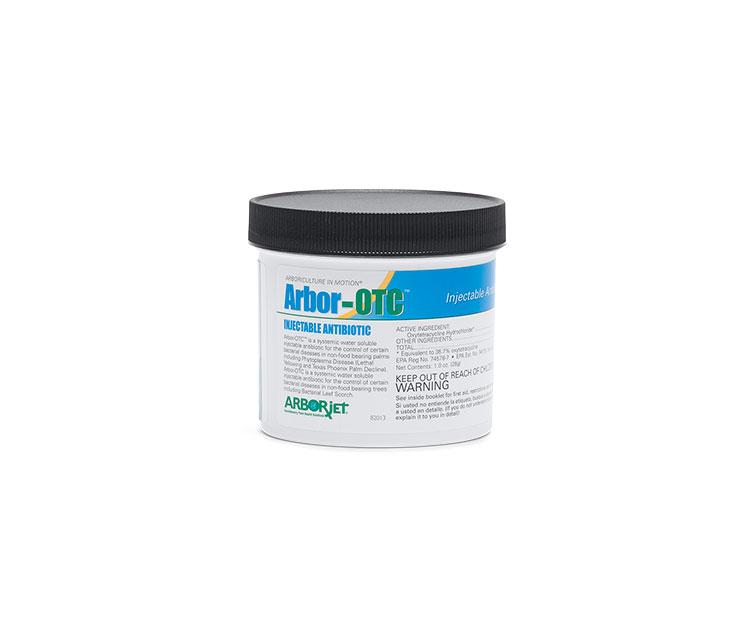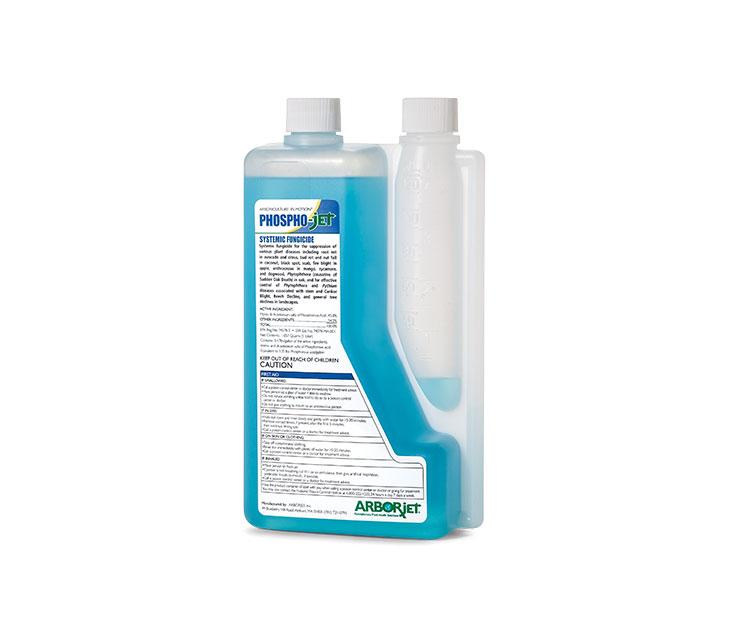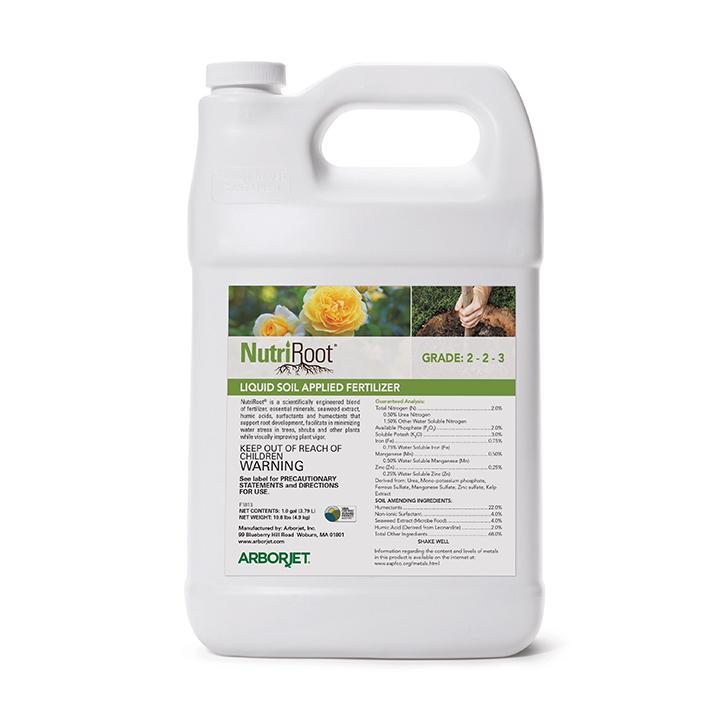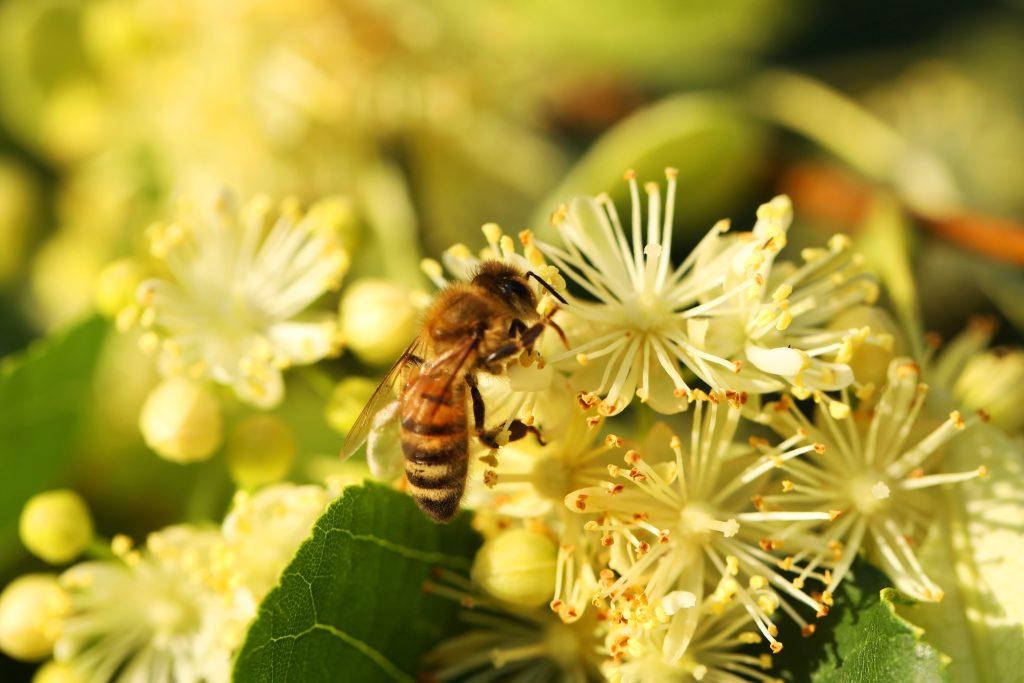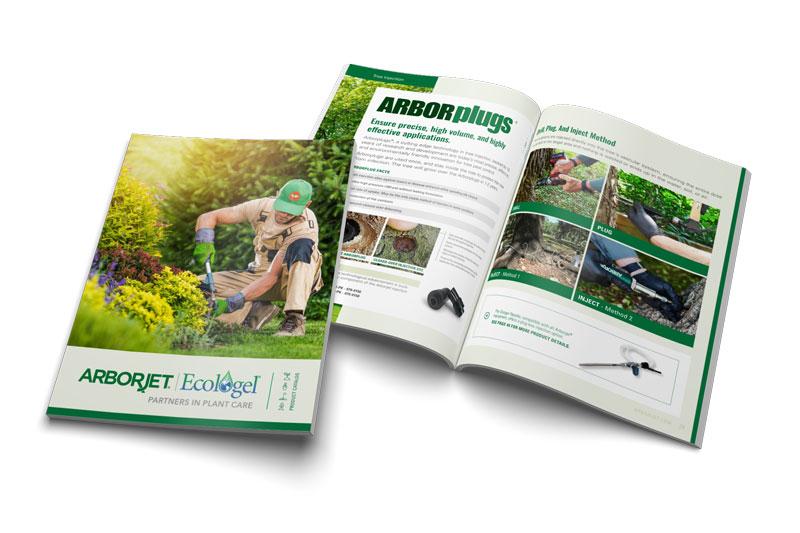Bacterial Leaf Scorch
Bacterial leaf scorch (BLS) is a systemic disease caused by the bacterium Xylella fastidiosa, which invades the xylem (water and nutrient conducting tissues) of susceptible trees. Xylem-feeding leafhoppers/sharpshooters, treehoppers, and spittlebugs spread the bacterium from tree to tree. Transmission between trees through root grafts has also been reported. There is no cure for this disease; it is chronic and potentially fatal.
Common Symptoms
Bacterial leaf scorch is found throughout much of the eastern and southern U.S. It is often present in landscape trees in many urban areas. This disease has not been detected in forest trees. Bacterial leaf scorch has been commonly observed in oaks, especially pin oak and red oak, and in sycamore. It is also occasionally found infecting red maple, sugar maple, silver maple, London plane, hackberry, mulberry, elm, and sweetgum.
Leaves develop normally early in the season. The first noticeable symptom is premature browning of leaves in mid-summer. Necrosis begins along the leaf margin and spreads toward the veins and petiole in an irregular pattern. Symptoms worsen throughout late summer and fall. Leaf margins turn brown, beginning with the older leaves and moving outward, spreading to leaves toward the branch tip. In most, but not all infected trees, browned, dead areas of the leaf are separated from green tissue by a narrow yellow border. The browned leaves may drop from the tree. Infected trees leaf-out normally the following year, with leaves on a few more branches turning prematurely brown in late summer. Symptoms become progressively worse over a period of 3 to 8 years, until the entire tree turns brown prematurely.
Treatments
Arborjet recommends a two-part trunk injection of IMA-jet® to deal with the leafhopper/spittlebug vector and Arbor-OTC® bactericide to deal with the bacterium every 120 days. Initial treatment should be applied after leaf expansion, but prior to symptom development. To increase the resilience of the tree, a follow up application of PHOSPHO-jet™, NutriRoot®, and/or Mn-jet Fe™ is recommended. Water during dry periods may help to reduce tree stress. Incorporating a moisture manager into the root zone, such as Hydretain® helps manage drought stress.
References And Photo Credits
Header Image: BLS on red oak eaves, taken by A.B. Gould, Rutgers University
Bacterial leaf scorch affecting crown of oak, image taken by A.B. Gould
Bacterial leaf scorch on sycamore leaf, image taken by Theodor D. Leininger, USDA Forest Service, Bugwood.org
Bacterial leaf scorch on elm leaves: image taken by J.L Sherald, APS Woody Ornamentals Digital Image Collection
Sharpshooter – a known BLS vector: Center of Invasive Species Research – University California Riverside

